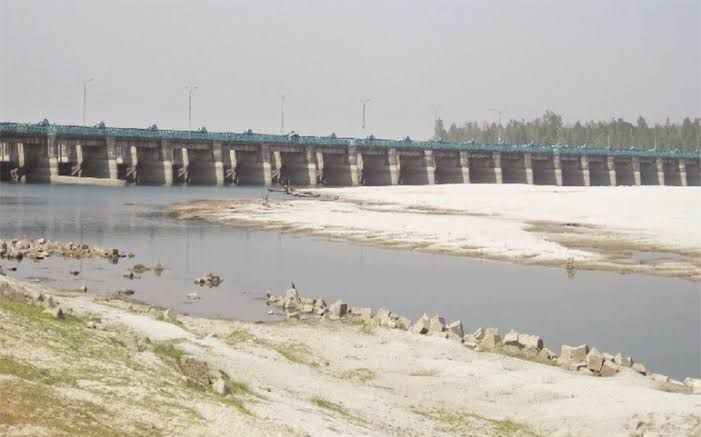
Bismillaher Rahmanir Rahim.
Assalamu Alaikum Wa Rahmatullahi Wa Barakatuhu
Dear Companions Today I want to share with you some words about the evils of killing foetuses.Welcom to this post and congratulations to all
The Teesta Barrage Project is a significant initiative aimed at harnessing the water resources of the Teesta River, one of the major rivers flowing through the northeastern parts of India and Bangladesh. This project has been planned to meet various water-related needs of the region, including irrigation, flood control, and power generation. Understanding why the Teesta Barrage is needed, its necessity, and its impacts will provide a comprehensive view of its importance and potential benefits.
Why Teesta Barrage is Needed
The primary purpose of the Teesta Barrage is to manage and utilize the water resources of the Teesta River effectively. The river, which originates in the Himalayas and flows through Sikkim and West Bengal in India before entering Bangladesh, plays a crucial role in the agricultural and ecological landscape of the region. Several factors contribute to the need for the Teesta Barrage:
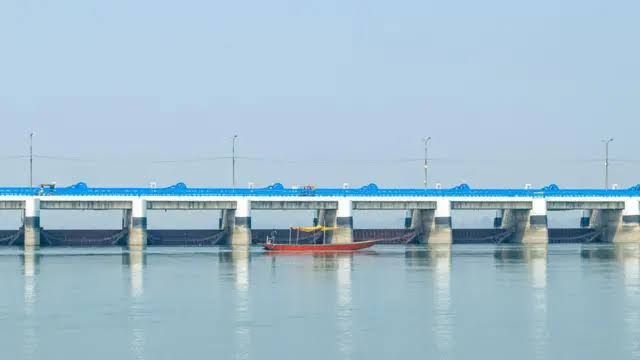
source
Agricultural Requirements: The Teesta River basin has fertile alluvial soil, making it ideal for agriculture. However, the region experiences fluctuating water availability due to monsoon patterns and seasonal changes. A barrage would regulate water flow, ensuring a consistent supply of water for irrigation, which is essential for growing crops like paddy, wheat, jute, and vegetables.
Flood Management: During the monsoon season, the Teesta River often swells and causes devastating floods in the surrounding areas. These floods damage crops, homes, infrastructure, and displace thousands of people, leading to economic and social hardships. The construction of the Teesta Barrage would help in managing these floods by controlling the flow of water, reducing the risk of overflow, and channeling excess water to safer areas.
Hydropower Generation: The region's demand for energy is growing, and hydropower is a clean and renewable energy source that can help meet this need. By constructing a barrage, it becomes possible to harness the kinetic energy of flowing water to generate electricity, reducing reliance on fossil fuels and promoting sustainable development.
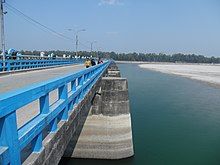
source
Water Supply for Domestic and Industrial Use: In addition to irrigation, the water stored in the Teesta Barrage can be used to supply clean water for domestic consumption and industrial use. This is particularly important in regions where water scarcity is a growing concern due to population growth and industrial expansion.
Necessity of the Teesta Barrage
The necessity of the Teesta Barrage can be better understood by analyzing the socio-economic and environmental challenges faced by the region in the absence of a regulated water management system. Here are some of the critical reasons why this project is essential:
Ensuring Food Security: Agriculture is the primary livelihood of millions of people in the Teesta River basin. The irregular availability of water, especially during the dry season, leads to low agricultural productivity and affects food security in the region. The barrage would ensure a steady supply of irrigation water, increasing crop yields and supporting the livelihoods of farmers.
Climate Change Resilience: The impacts of climate change, such as erratic rainfall patterns, melting glaciers, and rising temperatures, have a direct effect on river flows. These changes can exacerbate the problems of drought and floods in the region. The Teesta Barrage is necessary to create a resilient infrastructure that can help adapt to these climate-induced challenges by providing controlled water storage and distribution.
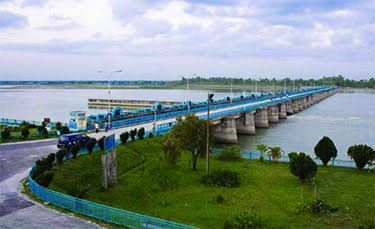
source
Balancing Ecosystems: The Teesta River supports diverse ecosystems, including wetlands, forests, and wildlife habitats. During dry periods, reduced water levels can threaten these ecosystems, leading to habitat degradation and loss of biodiversity. By regulating the river’s flow, the barrage would maintain ecological balance, ensuring that both human and environmental needs are met.
International Water Disputes: The Teesta River is shared between India and Bangladesh, and its waters are a source of contention between the two countries. Bangladesh has been seeking a fair share of the river's water to support its agriculture and economy. The establishment of the barrage and a well-defined water-sharing agreement could help resolve disputes and foster better relations between the two nations.
Impact of the Teesta Barrage on People and Environment
The construction and operation of the Teesta Barrage will have significant impacts on both people and the environment, with both positive and negative consequences.
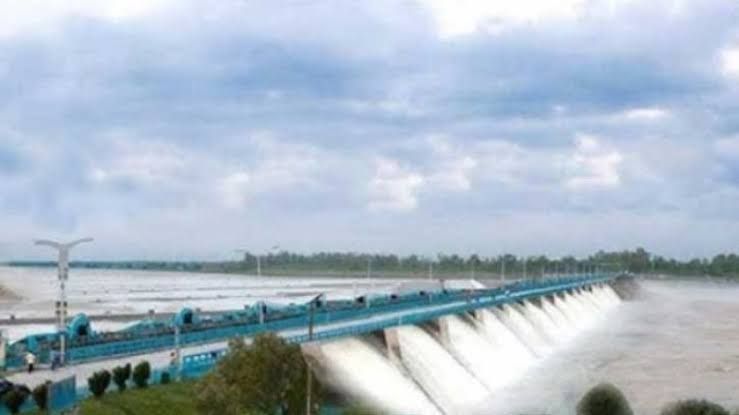
source
Positive Impacts
Improved Irrigation Facilities: The most direct benefit of the Teesta Barrage will be to agriculture. Farmers in the region will have access to a more reliable source of water, which can enhance crop production and allow for multi-cropping cycles. This will lead to increased agricultural productivity and better income for farmers.
Flood Control and Risk Reduction: By regulating the flow of water during the monsoon season, the barrage will significantly reduce the risk of flooding in the lower regions of the Teesta River basin. This will save lives, protect property, and prevent the loss of agricultural lands, reducing economic losses and improving living conditions for local communities.
Economic Development: The increased agricultural output and availability of water for industrial use will spur economic development in the region. Improved water infrastructure can attract investment in agro-based industries, food processing units, and other sectors that depend on water.

source
Employment Opportunities: The construction and maintenance of the Teesta Barrage project will create numerous job opportunities in the region, both during the construction phase and after its completion. This will help reduce unemployment and provide a livelihood to many skilled and unskilled workers.
Enhanced Power Generation: The potential to generate hydroelectric power from the barrage will help meet the region's energy needs. This will contribute to energy security, reduce dependency on non-renewable energy sources, and lower greenhouse gas emissions.
Negative Impacts
Displacement and Resettlement: One of the most significant social impacts of the barrage's construction will be the displacement of local communities living in the area. Many people might lose their homes and agricultural land, necessitating proper resettlement and rehabilitation plans to minimize their hardship.
Environmental Concerns: Large-scale infrastructure projects like the Teesta Barrage can have adverse effects on local ecosystems. Altering the river’s flow might affect aquatic life, disturb fish breeding patterns, and change the natural habitat of various species.
Sedimentation and Soil Erosion: The barrage could lead to sediment buildup, which might reduce the water-holding capacity of the reservoir over time. Additionally, soil erosion in upstream areas could become a problem, affecting land quality and agricultural productivity.
Impact on Downstream Areas: While the barrage will regulate water flow, it might reduce the amount of water available downstream, particularly in Bangladesh, during the dry season. This reduction can lead to water scarcity issues, affecting agriculture and other water-dependent activities in the downstream regions.
Benefits of the Teesta Barrage Project
The completion of the Teesta Barrage Project promises numerous long-term benefits for the people, the economy, and the environment. Some of the key benefits include:
Enhanced Agricultural Productivity: With a reliable supply of irrigation water, farmers can practice more intensive farming and increase their crop production, which would directly improve food security in the region.
Reduction in Poverty: The economic benefits derived from better agricultural yields, increased employment opportunities, and industrial growth will help reduce poverty levels in the region, improving the overall standard of living.
Sustainable Energy Source: Hydropower generation from the Teesta Barrage will provide a sustainable and clean energy source, reducing carbon emissions and contributing to India’s renewable energy goals.
Regional Cooperation: The successful implementation of the Teesta Barrage Project could pave the way for better cooperation between India and Bangladesh in managing shared water resources. This collaboration could lead to more comprehensive agreements on river water sharing, benefitting both nations.
Boost to Tourism: The barrage and its surrounding areas could become a potential tourist attraction, promoting eco-tourism and water-based recreational activities, which would further contribute to the local economy.
source
The Teesta Barrage is a vital infrastructure project that addresses multiple challenges related to water management, agriculture, flood control, and energy generation. While it promises significant economic, social, and environmental benefits, careful planning and implementation are essential to mitigate its negative impacts on local communities and ecosystems. Proper resettlement plans, environmental conservation measures, and a balanced water-sharing agreement with Bangladesh will be crucial to maximizing the advantages of the Teesta Barrage Project for all stakeholders involved.